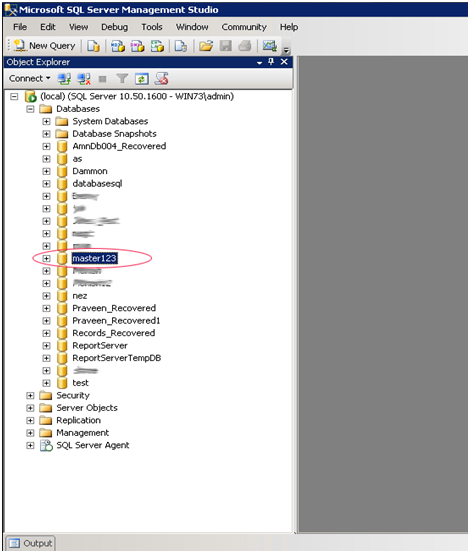

SQL Server could not be started: It is quite difficult to start if the master database file gets damaged.Segmentation fault and input/output errors: Corrupt database can result in making various errors.There are certain incidents which indicate that SQL master is having some corruption-related issues like: Symptoms Symptoms and Reasons for Master Database Corruption Method #2: Remove Corruption by Rebuilding Database.Method #1: Fix Corruption From Backup File.Fix Master Database Corruption in SQL Server.Symptoms and Reasons for Master Database Corruption.

To know the master database location, you can use the Find button in the application. Launch the software and browse to the location of the master database file.The software is intuitive and simple to use. This software is compatible with all SQL Server versions. This software restores these files if they are corrupted. The MDF and NDF files are used to store the information. This software can repair corrupt SQL server databases. An Alternative Solution to Repair and Restore SQL DatabaseĪnother solution is to use a third-party SQL database repair tool, such as Stellar Repair for MS SQL. Here, MSSQLServer is the instance name, SQLSYSADMINACCOUNTS is the system administrator user, SAPWD is the password, and CollationName is the collation used. Setup /QUIET /ACTION=REBUILDDATABASE /INSTANCENAME=MSSQLServer /SQLSYSADMINACCOUNTS=sa /SAPWD= MyP983”#3 /SQLCOLLATION=Latin1_General_CI_AS In the SQL Server installer, look for the setup.exe and run the following command: There is an option to rebuild the database using the command line. Restore database master from disk = ‘c:\stellarbackups\master.bak’ with replace Rebuild the Master Database Here, MSSQLSERVER is the server’s name, -E is to connect with Windows Authentication, -S is to provide the instance name, and -d is to specify the database to connect.įinally, run the below restore command to restore the database. Once the database is in single-user mode, you can connect with the SQLCMD and restore the database by using the following command: The second line will start the SQL Server instance in single-user mode. Use the correct SQL Server instance name. The first line is to stop the SQL Server. If you prefer to set the SQL Server instance in single-user mode using the command line, run the following commands. Optionally, you can use the -f start option to set the instance with minimal configurations. Here, -m is used to set the instance to single-user mode.


 0 kommentar(er)
0 kommentar(er)
